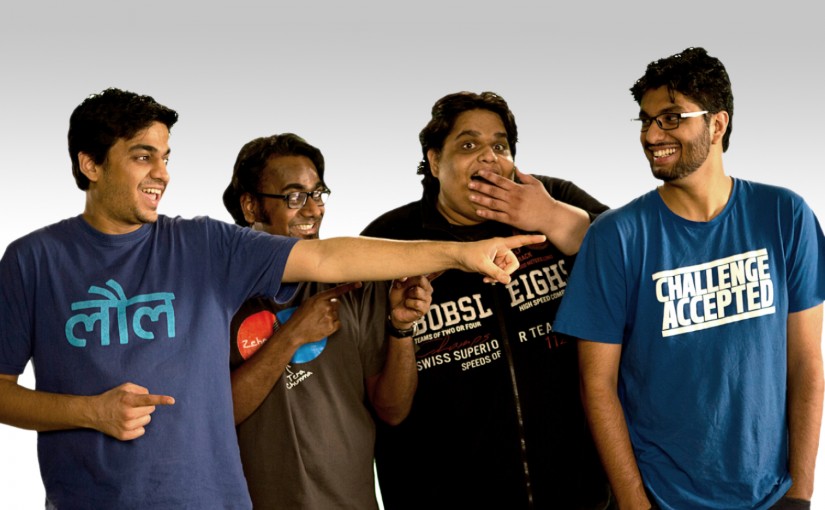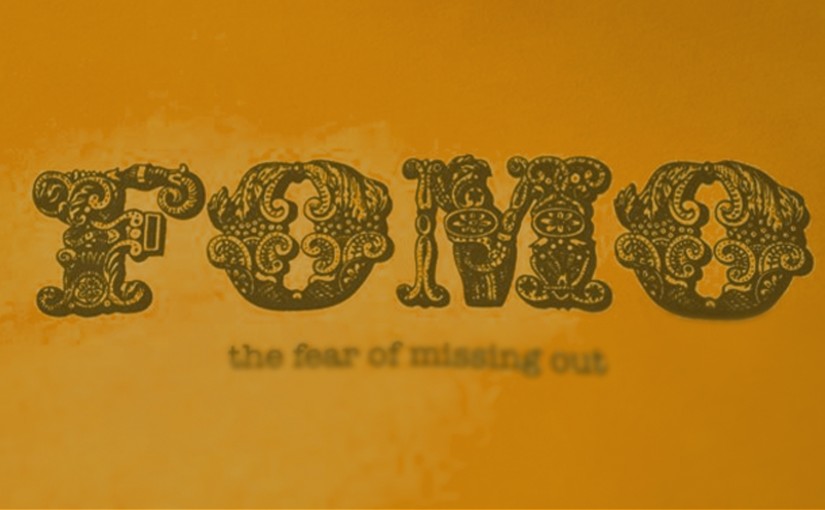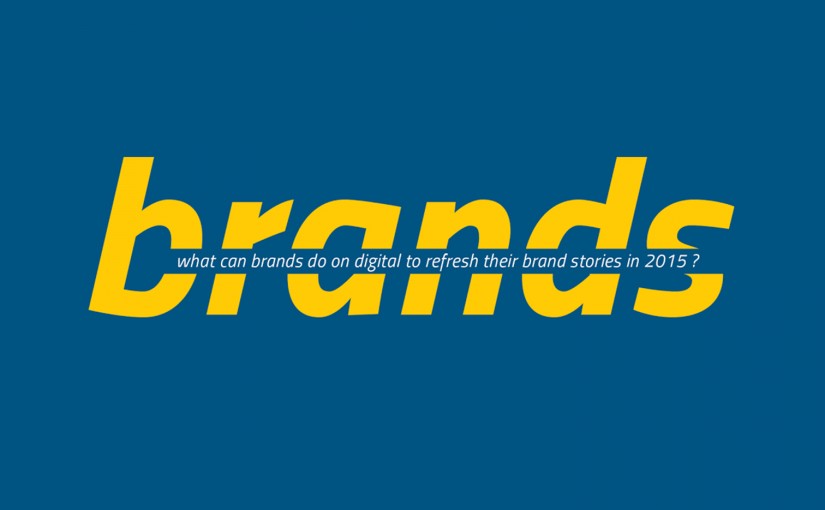Drop us a few lines about the task and we will get back immediately to see we how we can take the discussion forward. Alternately, just pick up the phone and speak with us at +91 9910034330 and we would be happy to help.
- - Do tell us a little about the nature of your business.
- - Be specific about what you’d like us to help you with.
- - Knowing your budget always helps us plan a suitable intervention.
- Blog
Blog the Talk 6: Enabled Publishing, a discussion with Ajay Jain.
-
Blog the Talk 6: Enabled Publishing, a discussion with Ajay Jain.

Blogworks – Blog the Talk discussion series was conceived to feature the best of learning from the ‘live web’ through panel discussions, talks and one-on-ones – mostly conducted online.
Blog the Talk series is presented by Ideafarms, an IT smart-sourcing company, providing enhanced business value to its globalised clients, through disrupting thinking and innovation.
Growing ambitions of enabled writers who have emerged with the advent of blogs; prolification of digital printing technology; adoption of digital reading; a plethora of tools to disseminate, market and promote content online, among other things, have all led to the emerging phenomenon of ‘self publishing’.
Having tasted popularity with their blogs, but not necessarily succeeded in monetizing their blog journals, or to seek even greater authority and stature as thought leaders, many are taking the natural next step by publishing a book.
However, most of the traditional publishing industry, particularly in the India context, continues to operate exactly like it has for years – submit a manuscript; they seek 6 months to revert – rightly so, given that they receive hundreds of unsought manuscripts and quality control is highest priority. However, there is no guarantee that your manuscript will even reach the right hands and be evaluated for its worth. Although some publishing houses have started to look at blogs for content/ writers, but publishing contracts have, so far, been awarded for ‘popular’ content.
Simply put, writing contracts are not easy to come by. What does an eager author do? Enabled Publishing, as I like to call it is the route that many are choosing.
Read this interesting piece published in Mint recently – large, new players are stepping in too.
Joining me today to discuss the phenomenon is my friend Ajay Jain.
A bit of a pioneer, Ajay has dabbled in diverse things including, IT hardware , sports management, dotcoms and real estate. He jumped into publishing after stint as a journalist with The Financial Express (graduated in journalism from the prestigious Cardiff University, UK) and published The Campus Paper : powered by his editorial team and hundreds of student journalists – and this much before the term citizen journalism became part of common lingo – he brought out a publication by and for the youth.
Recently he chose to go with enabled publishing, to publish his first book: Let’s Connect – using LinkedIn to get ahead at work.
I wanted to benefit from the learnings and asked him…
All thoughts expressed by participants are personal opinion of respective speakers and do not represent the views of Blogworks or any other company/ organization.
Rajesh:Ajay, congratulations! Tell us about the book.
Ajay:In the world of social media, LinkedIn has emerged as the hottest professional networking site in the world leaving all competition far behind. And India is their third biggest market after the US and the UK.
My book talks of the principles of using this site to get ahead as a professional. This has been divided into specific topics like expanding your Rolodex, using it as a personal branding tool, for sales and marketing, tapping the inherent wisdom of the LinkedIn community through Q&As, for finding a dream job, for hiring people and a few other thought provoking suggestions. Major emphasis has been laid on interviewing existing users who have shared their experiences and opinions which readers are finding most useful; these include from the likes of Guy Kawasaki, well known author, entrepreneur and investor.
It is not a user’s guide; it talks of the bigger picture. So don’t expect screen shots, or tutorials on how to use the site. But it does cover the usability factor to the extent you generally know how the site works.
The following extract from the back cover of the book may be a useful read here:
LinkedIn has made the world of business a much smaller place. The contacts you seek are no longer separated from you by six degrees; the number is down to one, two or three in most cases if you are on LinkedIn, by far the most successful and vibrant of all professional networking sites.
And it has leveled the playing field in ways one could not have imagined. The community of LinkedIn users can now be used by anyone for accessing faraway markets, landing dream jobs, raising capital, attracting the best of talent, building corporate brands and more. What you can achieve is limited only by your imagination and effort. The ingredients are all there to whip up something profitable for yourself.
And it is not rocket science.
This book is full of ideas, real cases and suggestions on how to get LinkedIn to work for you. Because, as you will see, LinkedIn works for you even as you sleep.
Rajesh:Do share, why did you think about publishing the book yourself? Why not go with a mainstream publishing house? You have the necessary credentials, you write well – you would have found someone to publish the book for you.
Ajay:I figured this is not a book that can be sold through conventional means; key to its success would be a direct and social media marketing strategy. And there is probably no publisher in the world who would make such an effort; I know of publishers who have come out with books of a similar genre in the US but have asked the authors themselves how they planned to promote the book. In other words, the author has to be the CMO of such a book too.
It would have been fine to let someone publish the book, and I promote it. But the dampener would have been the commercial side of it. Publishers typically pay an author 10% of royalty, and that too after a lag running into many months. Neither the quantum nor the cash flow would have been enough to sustain any marketing campaign by me as the author. I thus decided to self publish it, keep a higher margin for myself and invest that money into marketing. I have already recovered the investment in the first print run by selling only 40 percent of my stock. This would not have been possible with a publisher where I spend on promotions and he keeps the cream of the profits.
Rajesh:So what were the various options you considered for publishing/ printing the book?
Ajay:I did consider print on demand offered by companies like Lulu. But this was an expensive option and would have turned away buyers. Yes, there is no initial investment here but the consumer is more concerned with the end price. Publish on demand works best for niche titles and coffee table books which have a relatively lower offtake. I decided to settle for self publishing by seeking out designers, editors and printers myself (I have considerable experience in such production) and made a go of it. I had to apply for an ISBN number which I managed; you cannot sell any book through trade channels without this.
Rajesh:So finally what happened?
Ajay:The book is out, in select stores but more importantly being offered directly on my blog www.techgazing.com/linkedin (where you can read sample chapters and get reviews, access the media kit and get ordering info) and Amazon. I have come out with an e-book version of the same, and have sold a substantial number of these too.
Rajesh:What were your key learning from the exercise?
Ajay:Lots. And some are still learning-in-progress. Here go some:- Setting up a distribution network through brick and mortar stores is a big challenge. I have still to overcome it.
- A need to ensure the printer is an expert at cutting and binding books as it is a finer process than for a magazine or a newspaper.
- Setting up online stores on Amazon.
- Getting ISBN numbers and printing barcodes.
- The economics of the game: Up to 55 percent of your cover price goes to the distributors + the cost of sending books to their warehouses. You can imagine how much money one is left with after sending books to the US to Amazon: they keep 55 percent + you ship to them at your cost. Add to this the cost of editing, design, printing, promotions etc and you realize why books are profitable only when they have sold a certain minimum number.
Rajesh:Ok great, now that the book is out, how are you planning to promote the book- online and offline?
Ajay:The book has been and is being reviewed by new media publishers like Internet Radio Shows, Blogs etc and being linked to the relevant sites. This has helped gain some initial traction. At the same time, it being sent to traditional media for reviews and there should be some action there soon.
I am also putting into practice some of the ideas I have proposed in my book. It is being promoted on LinkedIn itself, where I am engaging with other members on different things, and putting in a word about my book in the process. This has been leading to a good part of the sales too.
Groups have been set up on LinkedIn and Facebook where members are being encouraged to go in for Face to Face meets – a logical step to follow to online professional networking. After all, all professional transactions are between real people and at some stage they need to meet. In the process, the book gets promoted indirectly.
I am also writing to companies and other organizations to address their staff on online professional networking, major emphasis being on LinkedIn of course. A few have already been taken place, and more are in the pipeline. These are like speaking opportunities for me, promoting the book in the process.
Some contests and giveaway promotions are also being put together.
Rajesh:What do you think is the future of traditional publishing?
Ajay:This will continue to hold sway only till consumers are highly dependent on physical stores to browse through books before making purchase decisions. The biggest advantage traditional publishers have is their hold on the distribution networks. But this is just a matter of time. As Amazon has already shown, distribution is now so open that even a first time publisher-author like me has the same positioning on Amazon as a Wiley or Penguin. And with the success of e-readers like Kindle from Amazon, authors can even save themselves the investment in paper printed books. If early indicators are anything to go by, people may take to e-readers more comfortably than thought otherwise. The feel of paper and the smell of ink may hold their appeal for a certain kind of reading, but niche and specialist publications can just go electronic. It will also make it easier to offer updates to readers.
Rajesh:And what are the plans for your publishing venture – TCP Media. Anything coming up?
Ajay:TCP Media will continue to publish its two main blogs: TechGazing (on technology, as the name suggests) and Kunzum (The India Travel Show). With the experience of my book behind me, TCP is open to publishing books on management and marketing, but more from a new media and web perspective. These could be social media marketing, PR 2.0, mobile marketing etc. The other plan is to publish travel guides and travelogues on India, both written by me, as well as by others (I could be the editor when putting together anthologies). The first of these should be out Q3 2008.
Rajesh:What in your opinion is the future of publishing and particularly enabled publishing?
Ajay:The current model of publishing is going to continue to thrive with its shortcomings: a handful of publishers and their editors decide what’s good and what’s not. Unless the author has become a celebrity and they can get away with rubbish being published too. The other limitation in the current model is the real estate: As it gets more and more difficult to find shelf space, or at least a prominent one, even good books are going to lose out. This is what happens in the FMCG model too. Furthermore, niche titles with lower volume prospects will either not get published or not find their way to the shelves.
It is because of this that authors will start – and they already have – either publishing themselves, or get into aggressive promotions themselves. And with devices like the e-book reader Kindle from Amazon getting a standing ovation from all kinds of readers, e-books could also be a big market. But how many authors will have the appetite to get into publishing and marketing? It is here that boutique set-ups can move in and fill the gap left by the big labels.
Rajesh:To conclude, what would be your top five tips for Indian publishing businesses?
Ajay:- Get into social and new media promotions – the traditional book reviewer may be passé .
- Aggressively get into online sales – there is big market out there who would rather shop online, and you will need to share lesser margins with trade channels.
- Online sales mean lower commissions, or none at all if you are doing it yourself, and the savings should be shared with authors.
- Open up unconventional channels like coffee shops as sales outlets.
- This might sound radical, but if an author is willing to underwrite publishing costs, allow him and publish his book rather than turn him away.
Great insights. Many more questions coming your way :). Thanks again.
Ajay is giving out a copy of his book for our readers leaving comments here – every week, for the next 8 weeks (at least). Criteria is simple – the comment that adds most value to the conversation gets to take the book.
Keep them coming.
If you enjoyed reading this edition of Blog the Talk and would like to read more, here you go.Disclaimer: Views of authors are personal and do not represent the views of Blogworks, or any of its clients.
-
Contact
conversations@blogworks.in
+91-9910034330 -
Newsletter
-
Social

























